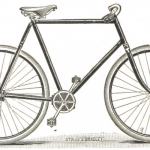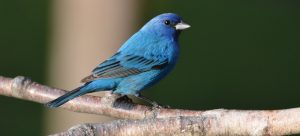
A paean to peaches
By Nancy Oakley
I vividly remember her hat, a wide-brimmed straw topper with a rounded crown, but what struck me most was its color, which matched her outfit: a soft pinkish-orange shade of peach. It seemed apropos to me that Patty Gordon-Mann should be so colorfully clad for the wedding of her niece and my childhood friend Margaret Frassineti, because I always associated the name Gordon-Mann with Sandhills peaches.
By now, some of my esteemed colleagues in Southern Pines who are reading this may be rolling their eyes at my enthusiasm for their local staple that, to them, must seem so commonplace. Who doesn’t take for granted anything quite literally grown in one’s own backyard? But for me, and I’d wager for anyone else residing in the Triad and points farther north or west, the arrival of local peach season is as big a deal as Christmas morning to a child.
Perhaps because my early childhood was somewhat peach-deprived. The only ones I’d known came out of a Del Monte can, smothered in thick, overly sweet syrup that masked their natural goodness. The stuff of school lunchrooms, they were often served with a scoop of cottage cheese, and sometimes a maraschino cherry as garnish. Hardly anything to write home about.
Until the day my friend Margaret’s mother and my godmother Bet Frassineti — aka “Aunt Bet” — introduced freshly picked and fragrant peaches to my family and me, arriving on our doorstep with a large round bushel basket filled with the plump, rosy fruit sheathed in oh-so-fine fuzz, some with stems and leaves still attached. My first bite of the tender, juicy yellow flesh inside was nothing short of a revelation.
And all the sweeter because Aunt Bet had taken the trouble to drive nearly two hours south and two hours back just to make a peach run for all of her friends. Her supplier was Aumans Orchard, which she had no doubt heard about from her husband, Dano, (short for Giordano and later Anglicized to Jordan), and her mother-in-law, Helen Gordon-Mann.
“Miss Helen,” as my mother called her, was an engaging Philadelphia gal who developed a shipboard romance with a naval officer and Italian noble Guido Frassineti, during a transatlantic crossing. The two married and produced two children, Dano and his sister Danila (named for Count Danilo, a main character in Miss Helen’s favorite opera, The Merry Widow). The family made subsequent trips between the States and Italy, specifically the hills overlooking Florence, home to the Frassineti farm. During another crossing, Guido died unexpectedly. Miss Helen ultimately remarried an expat named Eddie Gordon-Mann. Though a British subject, he was, for all intents and purposes, Italian. I once met Miss Helen and Eddie at a gathering Aunt Bet and Dano hosted at their old house on Round Hill Road, where I’d hang out with Margaret and her brothers Bill and Jeff, when we weren’t swatting tennis balls on the soft courts at Carlson Farms. Miss Helen and Eddie seemed very elegant and stylish to my awkward teenage eyes. She was tall and statuesque. He had white hair, a complement to his sartorial panache consisting of white flannels and navy blazer — complete with pocket-square. He was a cheerful soul with a twinkle in his eye, and he talked my ear off for the better part of the afternoon, though I could barely understand a word of his heavily accented English. Dano, I later learned, had little patience for his stepfather.
But such are family dynamics, especially blended ones frayed by the family’s separation during the war years. For when conflict raged through Europe, Miss Helen, Eddie and their two younger daughters Gaby and the aforementioned Patty, were interned in a concentration camp. Because they were considered Italian citizens, Dano and Danila, with the farm retainers to care for them, were allowed to remain in the basement of the family villa, which was used to quarter the occupying German army.
“My dad never eats chicken,” Margaret Frassineti once told me, explaining that her father had eaten more than his share of fowl, which would often spoil during those uncertain years; he had the unpleasant chore of snapping the birds’ necks. It was a scenario I couldn’t fathom for I only knew the tall, rumpled, laconic charmer with the rapier wit, whom my parents affectionately dubbed “Count Frassineti.” The same fellow grinning and mugging in the home movies of their infamous New Year’s Eve parties seemed a far cry from the boy my friend had described.
When, during the liberation of Italy, a division of the Fifth Army encamped at the farm, Dano was the one to communicate with its officers. One of them expressed admiration for the boy’s fluency in English, prompting Dano to explain that his mother was American. She was interned, he went on to say, and he did not know her whereabouts.
“Who is your mother and where is she from?” the officer asked.
“Her name is Helen Gordon-Mann.”
“I saw her at a cocktail party in Philadelphia before I was shipped overseas. She’s fine!” As coincidental — or implausible — as it all seemed, that’s how the family was reunited, or at least as was related to me a number of times over the years.
Apparently it didn’t take long for Miss Helen to readjust to life stateside. Soon after the family’s arrival in New York with little else but the tattered clothes on their backs, she outfitted Gaby and Patty via a personal shopper at Saks Fifth Avenue. When asked her sartorial preferences, Miss Helen allegedly responded, “Let’s start with a mink coat!”
It’s unclear to me how they settled in a stately stucco house in Southern Pines; Miss Helen may have visited previously and held an affection for the small burg, though it must have seemed tame to Dano and Danila after the upheavals of war. He would go on to Carolina — rooming with one of the Auman brothers — and study law. It was there that he met Aunt Bet, then a graduate student. Danila married and stayed in the Pines; many around town remember her as Dani Devins, noted for her equestrian paintings. Patty and Gaby settled in Philadelphia and Colorado, respectively.
Every summer these stories would come flooding back as my mother would pack my sisters and me into the car for our own daylong pilgrimage to the scorching Aumans Orchard and some of the Seagrove potteries. Before heading back to Greensboro, we would meander through the piney landscape, and she would point out Miss Helen’s house surrounded by hydrangeas that Eddie had cultivated. But by then, we were eager to head home with our loot for we had all developed our individual peach preferences: sliced fruit for my mom, cobbler for my dad. For my sisters and me, the ultimate was peach ice cream, which we’d mix in a manual ice cream maker in the backyard on humid summer evenings, waving away no-see-ums, as we took turns cranking the contraption’s heavy metal handle.
The excursions stopped once we all grew up and flew the nest. As a resident of the Lowcountry, my eldest sister Katherine has become a fan of South Carolina peaches — despite that state’s literal butt of jokes, the Peachoid water tower at Gaffney. S.C., peaches will do in a pinch, which is to say, before North Carolina peach season begins, and I have to admit that on a visit to my sister’s, in which I stopped at a rest center, I did enjoy a paper cup of freshly squeezed peach juice. It was light and refreshing, but not nearly as refreshing as my first Bellini on a trip to Venice.
What a stroke of genius that Giuseppe Cipriani, owner of the original Harry’s Bar, thought to blend peach juice and prosecco? He named it after Renaissance painter Giovanni Bellini, known to use in his canvases pastel shades similar to that of Patty Gordon-Mann’s hat from all those years ago. I toasted old Giuseppe on that trip — and though Florence was his turf, Dano, too.
He’s gone now, as are Miss Helen, Eddie, Danila and my childhood pal Margaret. After 80 years of operating, Aumans Ochard closed five years ago. On a recent chance encounter with Aunt Bet, Bill and Jeff, all a little grayer now, I thought I’d seen Dano’s ghost, for Jeff is the spirit and image of his dad. They’ll be top of mind later this summer when I pull into the Piedmont Triad Farmers Market and make a beeline for my current supplier, Candor-based Johnson’s. Manning the stall is a jovial fellow missing a tooth and a leg. “There’s peaches, and there’s Johnson’s peaches,” he once claimed, before wishing me a blessed day. He’s right. Their flavor heralds for me a new standard of peachdom, perfect for making smoothies — or Bellinis. Maybe I’ll take a cue from my niece, Liz, and try grilling them this year. Or maybe I’ll just slurp them down at the kitchen sink, letting their juices trickle through my fingers, unlocking the stories of many a lifetime with each and every bite. Bellissimo! OH
Nancy Oakley is the senior editor of O.Henry
Improvised Peach Smoothie
1 peach, sliced
1/2 cup of whole fat Greek yogurt, more if you prefer a thicker consistency
A dash of whole milk; more if you prefer a thinner consistency
A few pitted and sliced dark cherries (optional)
A dash of ground flax seeds if you’re a health nut
Place fruit in a blender with yogurt and milk.
Blend until everything is mixed together, no chunks of peach meat.
Drink and ascend to heaven.
Liz Beavers’ Grilled Peaches
4 peaches, halved and pitted
a pinch of cinnamon
Leave the grill on post-steak/burger.
Place the peach halves on the grill until they are golden brown.
Remove and sprinkle with cinnamon.
Serve over vanilla ice cream.
(Recipe also works with apples.)
For a more elaborate recipe, check out Bobby Flay’s Grilled Peaches with Cinnamon Sugar and Butter at foodnetwork.com.





